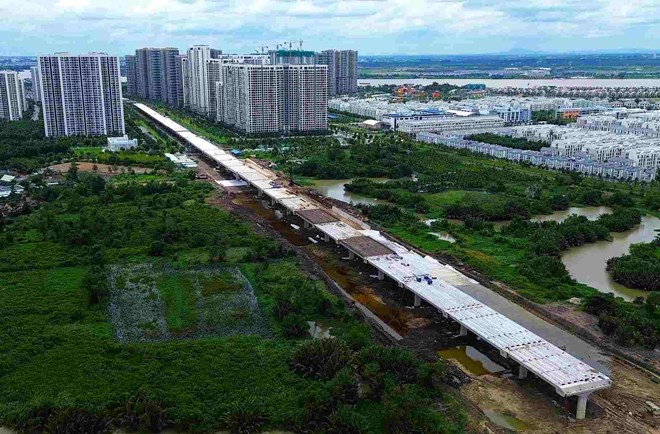The Standing Committee of the Ho Chi Minh City People's Council (HDND) has just decided to convene delegates to attend the 6th session of the 10th term of the Ho Chi Minh City People's Council (term 2021-2026), taking place from December 9 to 10.
Notably, at the meeting, the Ho Chi Minh City People's Council will question Director of the Ho Chi Minh City Department of Construction Tran Quang Lam about the progress and results of implementing key public investment projects; solutions to prevent traffic congestion; the implementation of social housing development programs and the coordination of issuing home ownership certificates in apartment buildings.
According to the Ho Chi Minh City Department of Construction, after merging with Binh Duong and Ba Ria - Vung Tau, the city is managing more than 12.7 million vehicles, including more than 1.4 million cars and 11.3 million motorbikes.
The Ho Chi Minh City Department of Construction has pointed out 6 main causes of traffic congestion, including:
Traffic is too large, especially private cars and motorbikes during rush hour.
Transport infrastructure has not yet met the speed of urbanization and travel needs. Many roads have narrow crossings, intersections have not been renovated synchronously, and lack public parking.
Many projects under construction on existing routes occupy the road surface, narrowing traffic lanes, causing local congestion.
Encroaching on sidewalks and roads for business and parking, forcing people to stop in the middle of the road, affecting traffic.
Traffic accidents and vehicle incidents have not been handled promptly, causing congestion in the line.
Traffic participants' awareness is still limited, violating regulations on stopping, encroaching on lanes, entering prohibited roads... are still common.

The Ho Chi Minh City Department of Construction said it is focusing resources on a series of large-scale infrastructure projects in both the central area and gateways.
In the area of the Eastern and Northeastern gateways, the city is constructing Ho Chi Minh City Ring Road 3, Tan Van intersection, An Phu intersection and My Thuy intersection.
At the northwest gateway, the city will deploy the Nga Tu Dinh intersection (intersection between National Highway 1 and Nguyen Van Qua Street).
The southern gateway and the National Highway 50 upgrade and expansion project are being accelerated to open to traffic by the end of this year, helping to reduce traffic congestion and increase connectivity with the Western provinces.
In the central area, the Nguyen Khoi bridge project (connecting the South and the center) will start construction on December 19.
Ho Chi Minh City is also preparing to invest in strategic projects such as Ho Chi Minh City Ring Road 4, Ho Chi Minh City - Moc Bai Expressway and Thu Thiem - Long Thanh railway connecting to Long Thanh International Airport; 4 projects to upgrade and expand National Highway 1, 13, 22 and the North - South axis road under the BOT (build - operate - transfer) form.
In the long term, the Department of Construction said it will coordinate with departments and branches to advise the Ho Chi Minh City People's Committee to develop a plan for developing transport infrastructure for the period 2026 - 2030, ensuring synchronization of the road, railway and public transport networks.
Ho Chi Minh City is preparing to invest in 9 urban railway lines (including 2 lines connecting to the former Binh Duong province). Of which, Metro Line 2 (Ben Thanh - Tham Luong) will start construction in January 2026. Ho Chi Minh City also continues to implement the Project to enhance public passenger transport combined with private vehicle control,...











